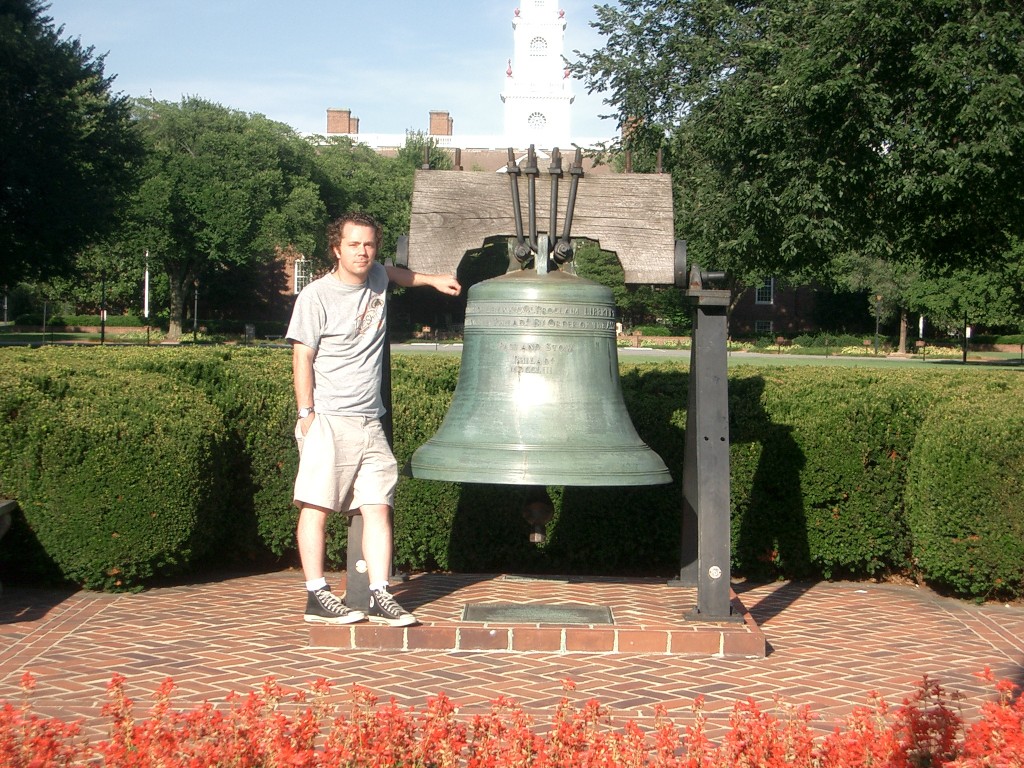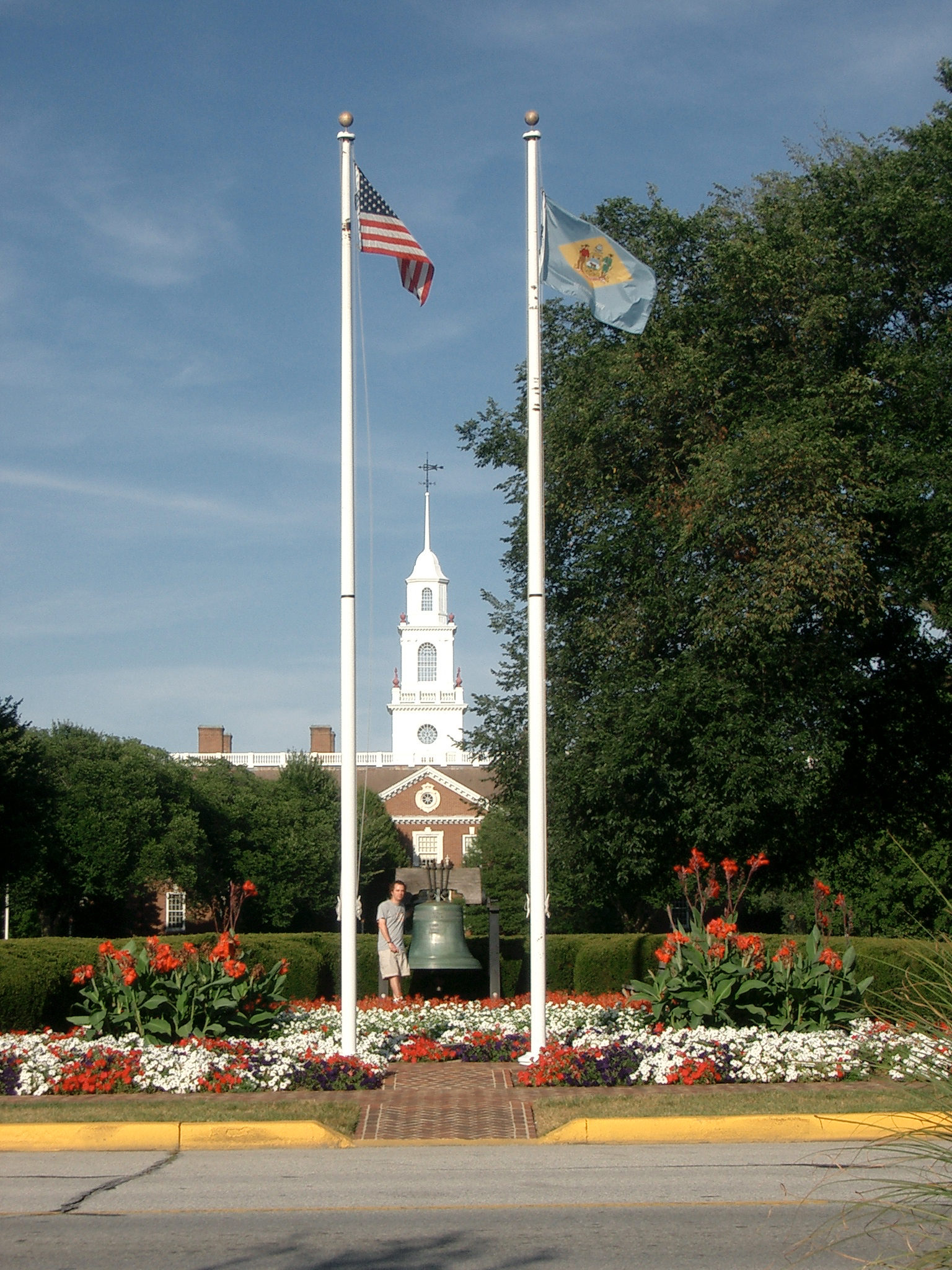The Delaware Liberty Bell replica
April 26, 1988: I’m in sophomore math class at Father Judge, an all-boys Catholic High School in Northeast Philadelphia.
I sit sideways at my desk, doodling in my notebook and not comprehending algebra. I’m talking to Jon Shookowsky, one of my twin best friends. Together, we’re the rhythm section of Attix, a hard-rock, mostly-cover band. We played our first gig a few weeks ago at the Philly Cookbook. (Don’t look for it, it’s not there anymore). We’re plotting the next Attix gig and subsequent world domination.
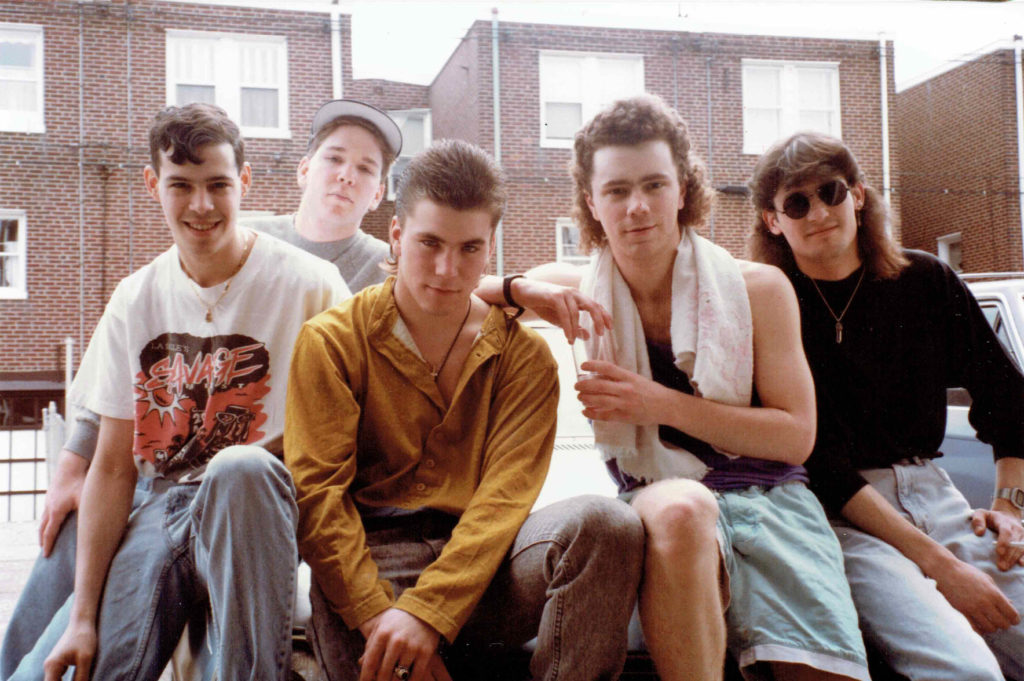
As I’m not paying attention to class, I don’t notice Mr. Caldwell approach. Caldwell is a grizzled, barrel-chested, buzz-cut drill sergeant of a math teacher.
Mister Caldwell: Stand up, Campbell
I stand.
Mister Caldwell: What do you want to do with your life?
Me: …
Jon: (screaming silently) Say it. Say it. Say it!
Me: …
I’m frozen silent. Frozen with fear. Frozen with doubt. Frozen by two dozen sets of eyes that now focus on me, wondering if they’re about to witness their first murder.
If I had a time machine, I wouldn’t go back to Independence Hall in 1776 or Red Rocks in 1983. I would go back to this moment and say what Jon wanted me to say, what every cell in my body wanted to say:
Caldwell: What do you want to do with your life?
Me: I wanna rock.
Mister Caldwell has just handed me a once-in-a-lifetime opportunity for my life to imitate the art I love. And in 1988, I love no artist more than Twisted Sister, the big-haired, fluorescently-clad heavy metal band. In the prelude of their I Wanna Rock music video, a psycho screaming teacher — played by Mark Metcalf, best known as ROTC officer Douglas C. Neidermeyer in the film Animal House — berates a corpulent, mulleted metalhead for desecrating a defenseless textbook.
The performance was a reprise of Metcalf’s role in the band’s video for We’re Not Gonna Take It, where he plays a psycho screaming dad who berates his son for playing an electric twanger.
The prelude skit for each video ends with the protagonist asking the same question and getting the same response:
“What do you want to do with your life?”
“I wanna rock.”
Had I the fortitude to tell Mr. Caldwell what I wanted to do with my life before he could strangle me with one hand, I would immediately transform into Twisted frontman Dee Snider, my classmates into the rest of the Sisters. We’d then parade around campus as Neidermeyer, the Wile E. Coyote to our Roadrunner, tried in slapstick vain to murder us.
This was my one shot. My one shot to pledge allegiance to heavy metal. My one shot to be transported through a twisted portal to a world where all I did was rock. I simply had to declare before my peers how much I wanted it, how much I wanted to rock.
And I blew it.
What was I going to do with my life?
Beaten but not broken, I vowed if I ever got another chance to live out a rock song — whether it be walking through Bedford Stey alone, kissing a sunset pig, or observing a bustle in my hedgerow — I wouldn’t blow the opportunity.
Fast forward 24 years. It’s July 24, 2012. Dawn and I are at the airport in Denver, on the way to Delaware to visit my mother in Millsboro, spend some time at nearby Rehoboth Beach and see what else the state has to offer.
Dawn: Do you know what’s in Delaware?
Me: …
Dawn: A Tastee Freez.
Me: Let’s do this.
Despite growing up 25 miles away, I had been to Delaware once before my mom and stepdad retired there. At a gas station. On the way to Virginia.
It’s our third trip to the First State, and we’re in love with this place. Delaware is small and hard to define. It’s like Pennsylvania, New Jersey, Maryland and Virginia carved off some of their crusty edges and mashed them together to form an entirely different but oddly familiar state. It’s gorgeous and gritty, agricultural and industrial.
Our flight lands in Baltimore early on a Wednesday morning. We plunk some change into an airport vending machine, grab a grape soda, and hit the road in our compact rental.
Our two-hour drive will take us south through Annapolis, Maryland, across the harrowing Chesapeake Bay Bridge (not to be confused with the terrifying Chesapeake Bay Bridge-Tunnel), then east through the rolling Maryland countryside into lower Delaware.
Of my numerous irrational fears, driving over large, open bodies of water is near the top of the list. So I’m a bit frazzled as we make landfall on Kent Island, Maryland. Our grape soda is long gone, and we’re getting hungry.
Dawn’s been fiddling on her phone the last few miles, and now I know what she’s been up to. “Turn here,” she says.
We exit Highway 50 onto a country road with tall evergreen groves to our left, open fields and a small municipal airport to our right. Eight minutes later, we turn onto an even smaller road and see where we’ll be spending the next hour and a half. We’re not yet in Delaware, but we’re on the Delmarva Peninsula, and vacation has officially begun.
The Kentmorr Restaurant has been serving up fresh crab to locals and tourists alike since 1954. Kentmorr offers indoor dining, outdoor picnic table seating and something called Dirty Dave’s Island Tiki Bar, a human-made beach with hammocks, umbrellas and a stunning view of the Chesapeake Bay’s eastern shore. Our footwear has laces, and our pants have legs, so we’re a bit overdressed for Dirty Dave. We opt instead for a table on the bayfront patio.
In a nod to our respective homelands, I start with the Crabby Pretzel, Dawn with the Crabby Tots. They’re each cheezy and crispy and generously loaded with crab chunks. The most intriguing thing on the menu is Excrabaganza: a bowl of red crab soup with all-you-can-eat fresh, whole crabs and boiled corn for two hours. Any meal with a time limit has to be worth the price.
We choose a less hands-on entree, each ordering the broiled Lump Crab Cakes. They’re fresh and crispy and salty. They taste like the air smells. They taste like the shore. They taste like it feels to wear your swim trunks all day.
Things are slowing down fast.
We change the Kentmorr’s name to Excrabaganza and vow to return.
The rest of our route to Millsboro is on two-lane country roads, winding through small towns and big farms. Roadside produce stands dot our path every few miles.
There is no geographic demarcation as Maryland turns into Delaware, but on two-lane roads in Maryland, you’re required to use headlights at all times of day. In Delaware, you can do as you please. I turn my headlights off and try to blend in.
Delaware is both the sixth least populous and the sixth most-densely-populated state. We’ll be spending our time in Sussex County, the lowest and slowest and southest of the state’s three counties.
It’s early afternoon as we roll into Pot-Nets, one of a growing number of land lease communities in the area. The land lease option keeps the dream of retiring “down the shore” alive for working-class people of my parent’s generation. Retirees and vacationers can buy well-built homes, well below market rate. Residents own their home and lease the land for as long as they live there.
We’re now squarely in the heart of what the locals call Slower Lower Delaware. Millsboro and the surrounding communities lie on fertile coastal farmland that is steadily giving way to vacation homes and retirement communities. The town’s name conveys its history, coined after Elisha Dickerson built a sawmill along the Indian River in 1792. By the early nineteenth century, there were fifteen mills within a four-mile radius. For two hundred years, since colonists displaced the resident Nanticoke people, the region has thrived by producing lumber and poultry — specifically broiler chickens. Agriculture still holds a thin lead over tourism as Sussex County’s leading industry.
We have a nice, quiet night catching up with my folks. Tomorrow we’ll sleep in and spend a few hours sipping decaf on the screened-in porch. Our lunch destination is a mere 16 miles away, and a lifetime in the making.

John Cougar’s Jack and Dianne spent four weeks at number one in the fall of 1982. In four minutes of handclaps, gated drums and unfiltered midwestern angst, the song paints a beautiful and terrifying portrait of two teenagers growing up in the American Heartland.
I was ten years old at the time, and I took everything literally. Subtlety and symbolism and metaphor were friends I had yet to meet. The more authoritatively something was presented, the more I believed it as the God’s-honest truth. And in 1982, no one was more God’s-honest than John Cougar.
Cougar taught me that being a teenager sucked, and things were so bad in the Heartland your only hope for salvation was to move to the Bible Belt.
What terrified me most, though, was the fact I had six short years to get my act together before the thrill of living was gone. Gone. I was going to have to hunker down and get to work.
In case the lyrics to Jack and Diane aren’t taking up precious space in your long-term memory like they are in mine, here is the particular piece of poetry that brings us to Laurel, Delaware on this warm July afternoon:
Suckin’ on chili dogs outside the Tastee Freez
Diane sitting on Jacky’s lap
Got his hands between her knees
Jack, he says:
“Hey, Diane, let’s run off behind a shady tree
Dribble off those Bobby Brooks slacks
and do what I please.”
Ten-year-old me picks up all the angst and impending doom the track lays down, but other parts are harder to comprehend.
Tastee Freez is awesome. That’s clear. We don’t have those where I live, so fifth-grade me plans to study, work hard and buy a car so I can drive to a state that has one. Diane seems nice enough, but I don’t understand why she’d sit on Jack’s lap while they eat chili dogs. That just seems messy.
I totally get why Jack would want to scurry off into the woods to finish his chili dog in peace, but depantsing Diane seems like an oddly-timed practical joke. She probably wouldn’t see it coming. Maybe that was the point.

I expect this Tastee Freez, and every Tastee Freez, to fully exploit their part in the Cougarian mythos, like the time we went to Tom’s Diner and every table was signed by Suzanne Vega, or like what Winslow, Arizona has done to itself.
My plan is to play it cool. I won’t pose with the lifesize cardboard Cougar cutout. I’ll ignore all the tourist doing the Jack and Diane thing. I won’t pay extra for the Hurts So Good Tater Tots or the Small Town Cheese Curds. I’ll peruse the menu board and see what strikes my fancy.
Tastee Freez was founded in 1950, the same year as the U.S. Treasury’s Liberty Bell replicas. It’s the classic American success story, the perfect partnership between inventor and entrepreneur.
Leo Moranz patented a revolutionary freezer and pump combination that produced better-tasting soft-serve ice cream and did it faster.
Harry Axene, an early Dairy Queen executive, hailed in DQ lore as the father of franchising, sold territory rights, collected royalties, and grew the DQ empire from 17 stores to nearly 1,400 in the four years between the end of the Second World War and 1950.
At the 1949 Dairy Queen convention, Axene presented the idea of Moranz’s automatic continuous freezer to DQ franchisees. When they rejected his proposal, he left the company to form rival Tastee Freez with Moranz.
Moranz and Axene licensed the Tastee Freez name to independent soft-serve stands that rented their machine — the same machine Dairy Queen turned down. Later they formed more structured franchise agreements, expanded store offerings, and invented a nozzle that produces the 5-point star soft-serve shape we all know and love today.
By 1952 there were 315 Tastee Freez locations. By 1957 the upstart was a serious contender for the American soft serve crown, with 1,800 stores nationwide.
In 1982, as Jack and Diane peaked, so too did Tastee Freez. That year, the Denovo Corporation — owners of several root beer-themed drive-in franchises — purchased the company. Other Devono brands gradually consumed the Tastee Freez brand; by 1992, there were only 340 stores. In 2018, just 22 freestanding Tastee Freez locations remained. There are now four.
Ultimately, Dairy Queen would keep their crown. Berkshire Hathaway acquired the brand in 1998. Today there are 6,400 locations around the world.
But on this hot summer day in Laurel, Delaware, it’s 1952 and it’s 1982 and it’s 2012. Time and tide have yet to sweep away this particular thrill of living.
“Welcome to Tastee Freez. What can I get you?” asks the woman behind the plexiglass. She is significantly older and more polite than I expected.
I take a long pause, breathing in the gravity of the moment. “I’d like an iced tea and … um … a chili dog, please.”
“Alright, one chili dog. Anything else?”
Dawn doubles down.
“Okay, that’s two chili dogs and two iced teas. Anything else?”
“Nope, we’re good.”
At Tastee Freez, the two dining options are outside and in your car. We opt outside.
Served simply in a red and white checkered cardboard sleeve, our chili dogs are remarkably, perfectly adequate. They’re not spicy, not complex, not regionally unique in any way.
We’re the only people sitting along the highway eating our meals. No one doing the John Cougar thing. No one to see us doing the John Cougar thing. Just Tom and Dawn, sucking on chili dogs outside the Tastee Freez.
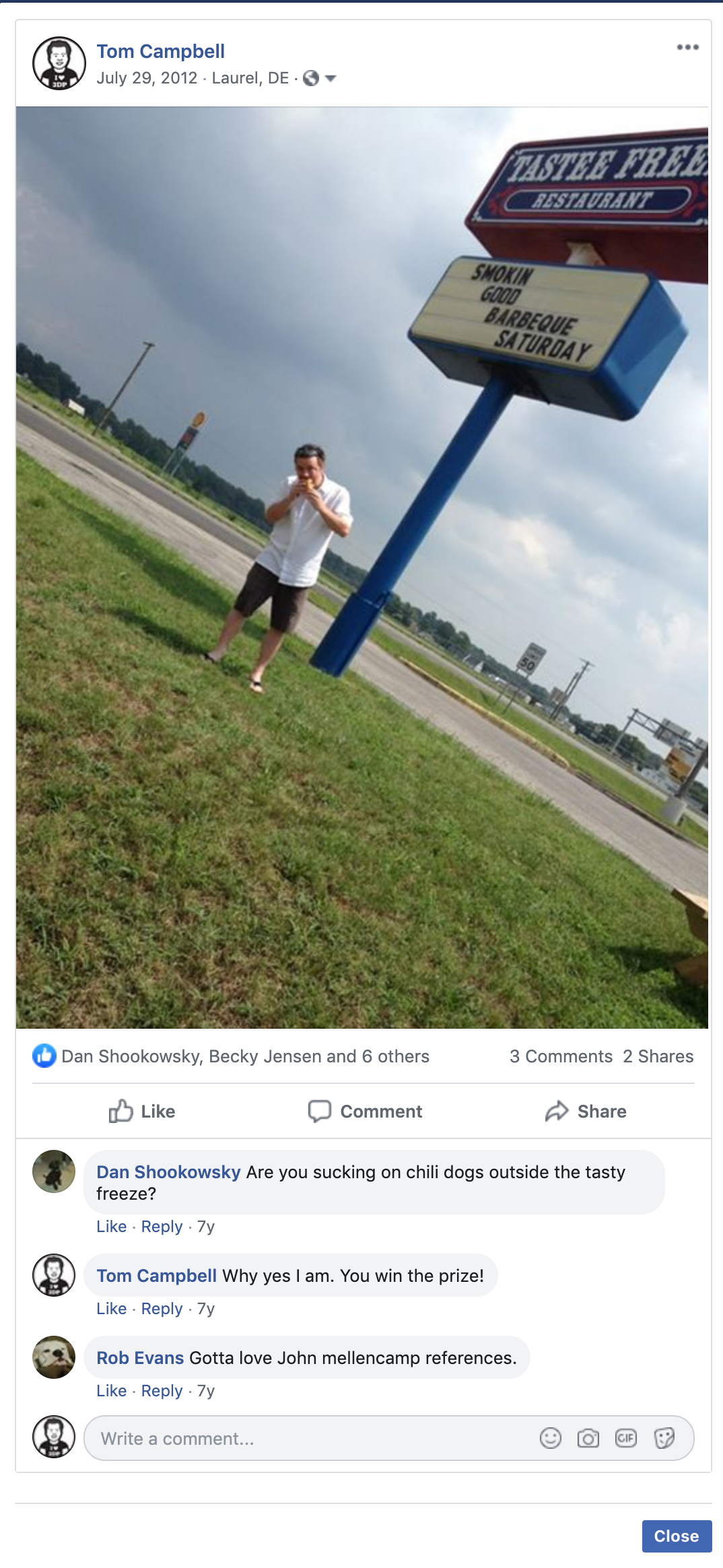
We return to Millsboro with no set plans for the rest of our visit. The next day, we sleep late, drink coffee until noon, and take a drive to Assateague, the bizarre island of tiny horses. Twenty-seven miles south of Millsboro, along the eastern edge of the Delmarva Peninsula, the barrier island is two-thirds Maryland, one-third Virginia and one-hundred-percent nuts.
Three-hundred tiny feral horses roam the beaches, giving zero fucks about the thousand tourists there to ogle them. They are like weary celebrities who’ve given up evading the paparazzi. “Take my picture, fine. Smile? Hell, no. Get in my way, and I will knock you out.”
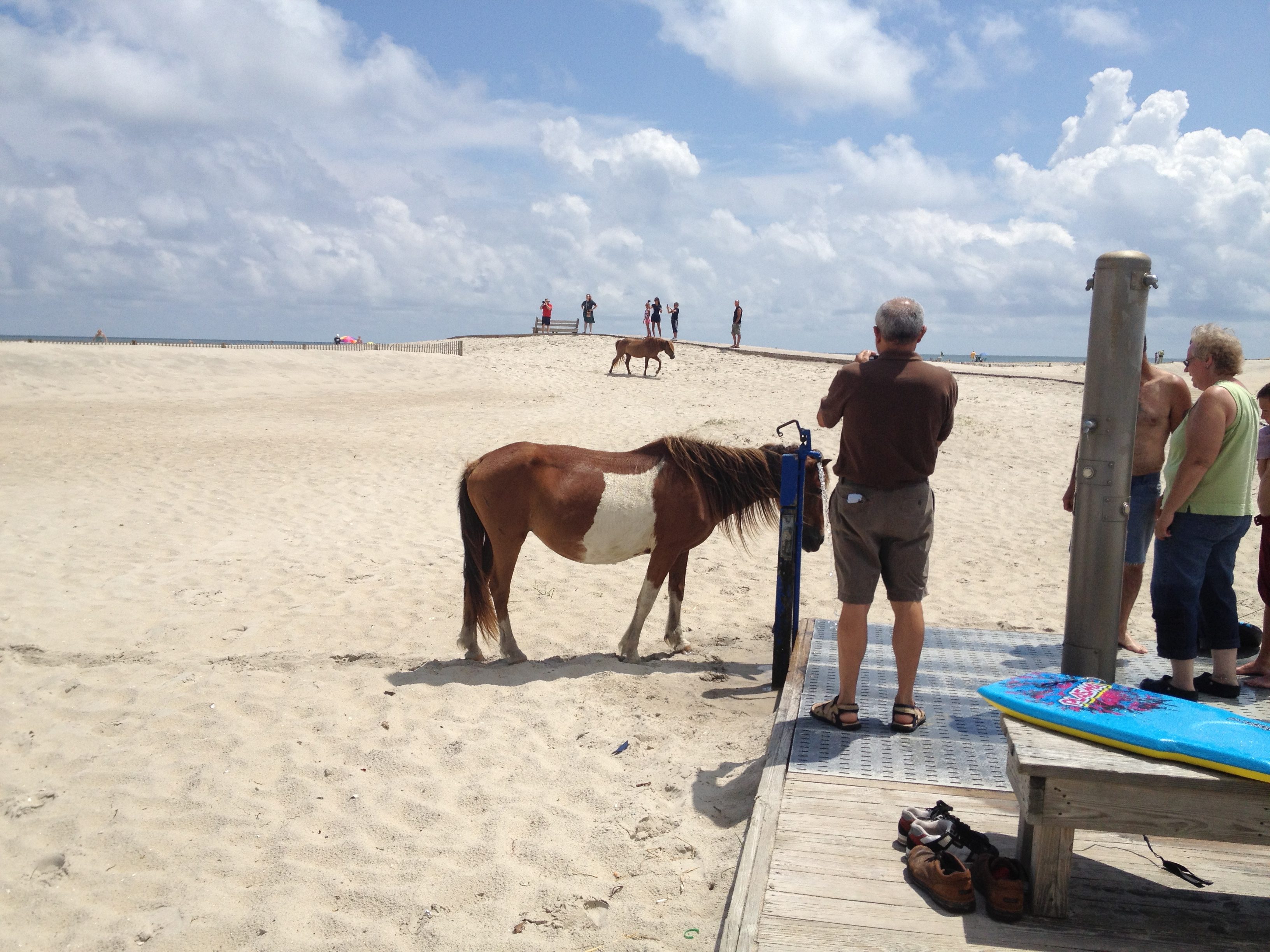
We spend the next day at Rehoboth Beach, a classic east-coast boardwalk town most known for being LGBTQ-friendly before being LGBTQ-friendly was an economic development strategy.
Delaware has a kind of cultural undertow; the deeper you go, the more strongly it sucks you in.
A perfect example of Delaware’s history getting richer the deeper you go is the story of the state’s own Liberty Bell.
In 1950, the U.S. Treasury commissioned 57 full-size, functional Liberty Bell replicas from the Paccard Bell Foundry in France. The bells were paraded through 48 states and five territories that summer, used as promotional tools for a Savings Bond drive. At the conclusion of the drive, the Treasury gifted the bells to their respective regions.
Not every bell found a worthy home. Some languished in storage for decades. One disappeared. And more than a few continued to travel in their retirement.
The Delaware Liberty Bell has one of the more sordid stories. Unlike the real deal, it has no crack. But it does have a sizable chunk missing, and — if you believe bells have feelings — some emotional scars.
When the 1950 Savings Bond drive ended, Delaware had hit their quota of $302,000. But the First State wasn’t sure what to do with its prize.
On Independence Day, 1950, the future seemed bright for the Delaware Liberty Bell. Governor Elbert N. Carvel accepted the bell in a ceremony at the Delaware Park horseracing track in Wilmington.
The bell was then unceremoniously dropped off on Loockerman Street Plaza in front of Dover City Hall, covered in a heavy tarpaulin. Initial plans had the bell located on the historic Dover Green, but citizens complained the area was already too full of statues and memorials.
The state determined there was no available space on Statehouse grounds and punted responsibility over to the city of Dover.
The bell remained on Loockerman Street Plaza until May 30, 1951, when it was moved to a so-called “beautifying plot,” a small strip of land lying within the fork of Governors Avenue Boulevard and North State Street, south of the Silver Lake Highway Bridge. Rights to the plot were granted by the Richardson family, who stipulated the city not remove trees or add buildings. The Daughters of the American Revolution spruced up the area with flowers and shrubs.
Within months, the bell was again on the move. On November 17, 1951, it landed at the southwest corner of Division Street and Pennsylvania Avenue. At Lamia Place, a small, city-owned plot named for Dover’s sister city in Greece, the bell sat beneath a giant dogwood tree, nearly a century old.
But Lamia Place proved problematic as well. Local children had adopted the small strip of grass beneath the huge dogwood tree as their own, and they were not going to lose their playground to a hunk of bronze without a fight. The children filed a petition of protest with the city, demanding their playground back. Dover did what most cities would do when faced with precocious children practicing democracy — they capitulated, agreeing to move the Deleware Liberty Bell yet again.
This time, the Delaware State Highway Department came to the rescue. On July 3, 1952, they moved the bell to a newly-constructed median in the middle of DuPont Parkway, in front of Dover Downs.
Before the bell could settle in its third permanent home, the Highway Department decided to enlarge the entrance to Dover Downs. They moved the bell just up the road, in front of the State Police Headquarters Building.
At one of these two locations, the bell was struck by a car, removing a small chunk.
The bell remained in front of the State Police Headquarters until 1976 when the U.S. Bicentennial sparked a renewed patriotic fervor across the nation. The Delaware Liberty Bell was restored, save for the car crash scar, and moved to the newly-commissioned bell-shaped Bicentennial Memorial Park on Federal Street, directly between the Capitol and the Old State House. There it was flanked by boxwood trees, planted to form the numbers 1776 when seen from above.
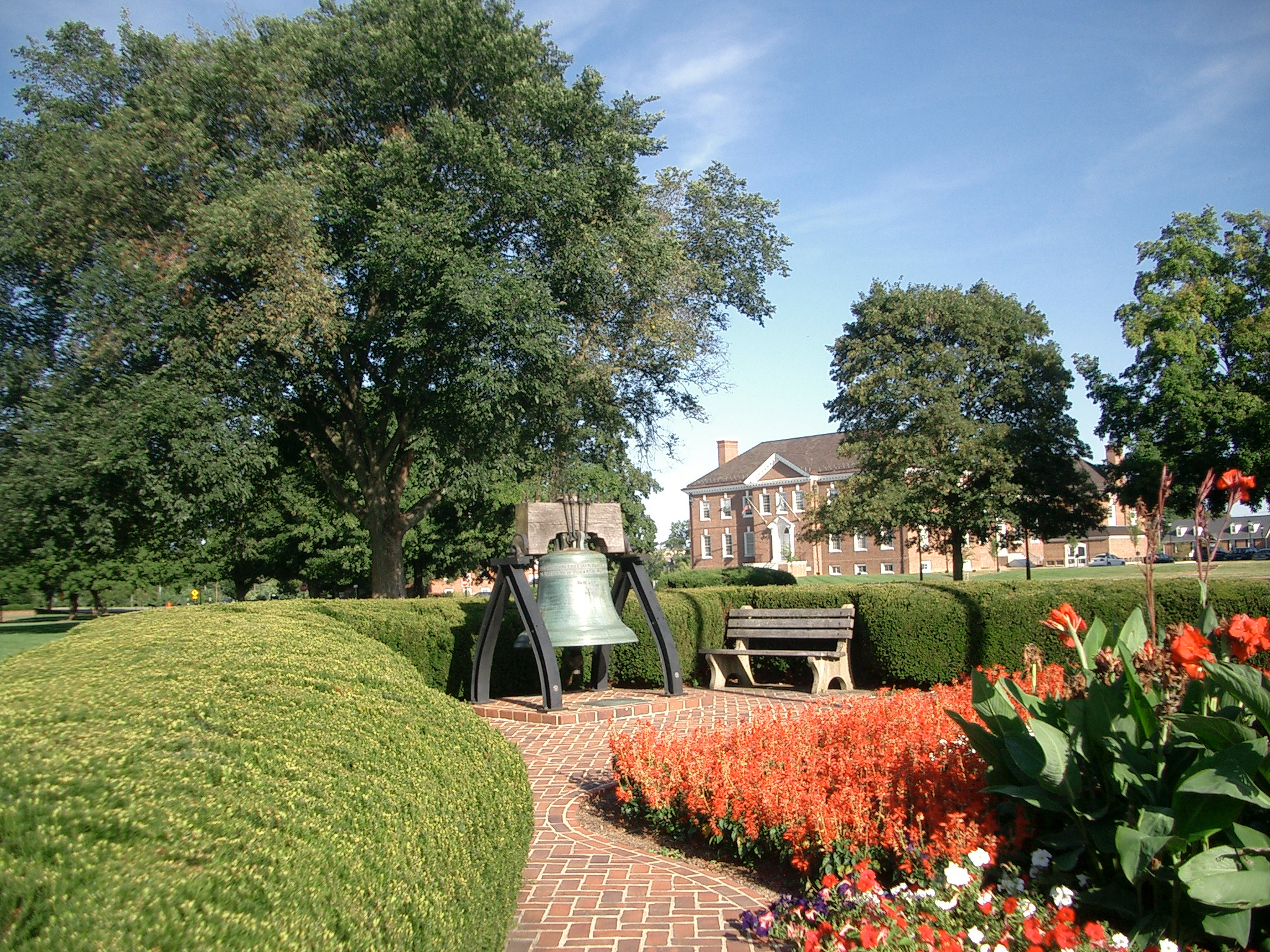
On the Capitol grounds and on the beaches, at roadside farmers’ markets and the international speedway, life goes on in Delaware. The Delaware Liberty Bell’s boxwood trees have matured. When you look at them on Google Earth, they look simply, beautifully, like trees.
The Tastee Freez in Laurel closed a few years back, replaced by something called Smash N’ Dash Burgery.
As for me, I ended up doing exactly what I wanted to do with my life. I went to art school and became a graphic designer. Now I doodle in my notebook and tell stories for a living. In Dawn, I found my partner in work and life and Liberty Bell hunting. I still can’t comprehend algebra, and whenever I get the opportunity, I rock.
John Cougar, known as John Mellencamp since 1991, is currently working on a Broadway musical based on the mythical lives of his teenage muses, Jack and Diane. But don’t expect a feel-good rocker like Jersey Boys, Rock of Ages, American Idiot, We Will Rock You, Dreamgirls, Ain’t Too Proud, You’ve Got a Friend or Beautiful.
Mellencamp is quick to dash any hopes of theatergoers gleefully singing his songs on their way to the subway after the show, “This is not a jukebox musical. My ambitions are set very high, as close to Steinbeck as we can get it in today’s world, with these two kids.”
No word yet on whether chili dogs will be served at the theatre.
